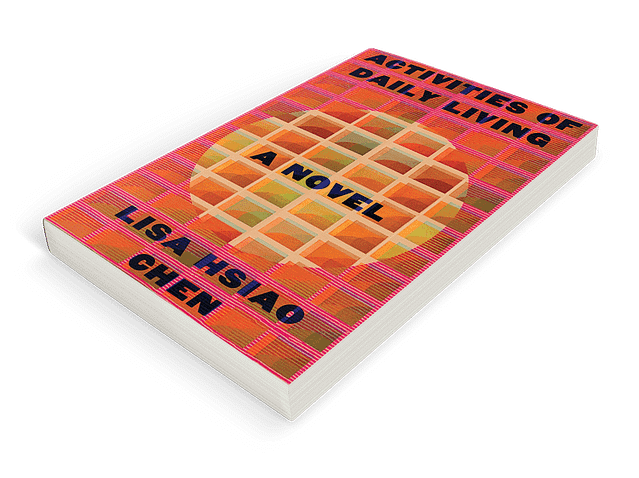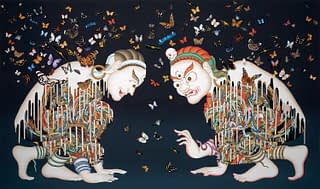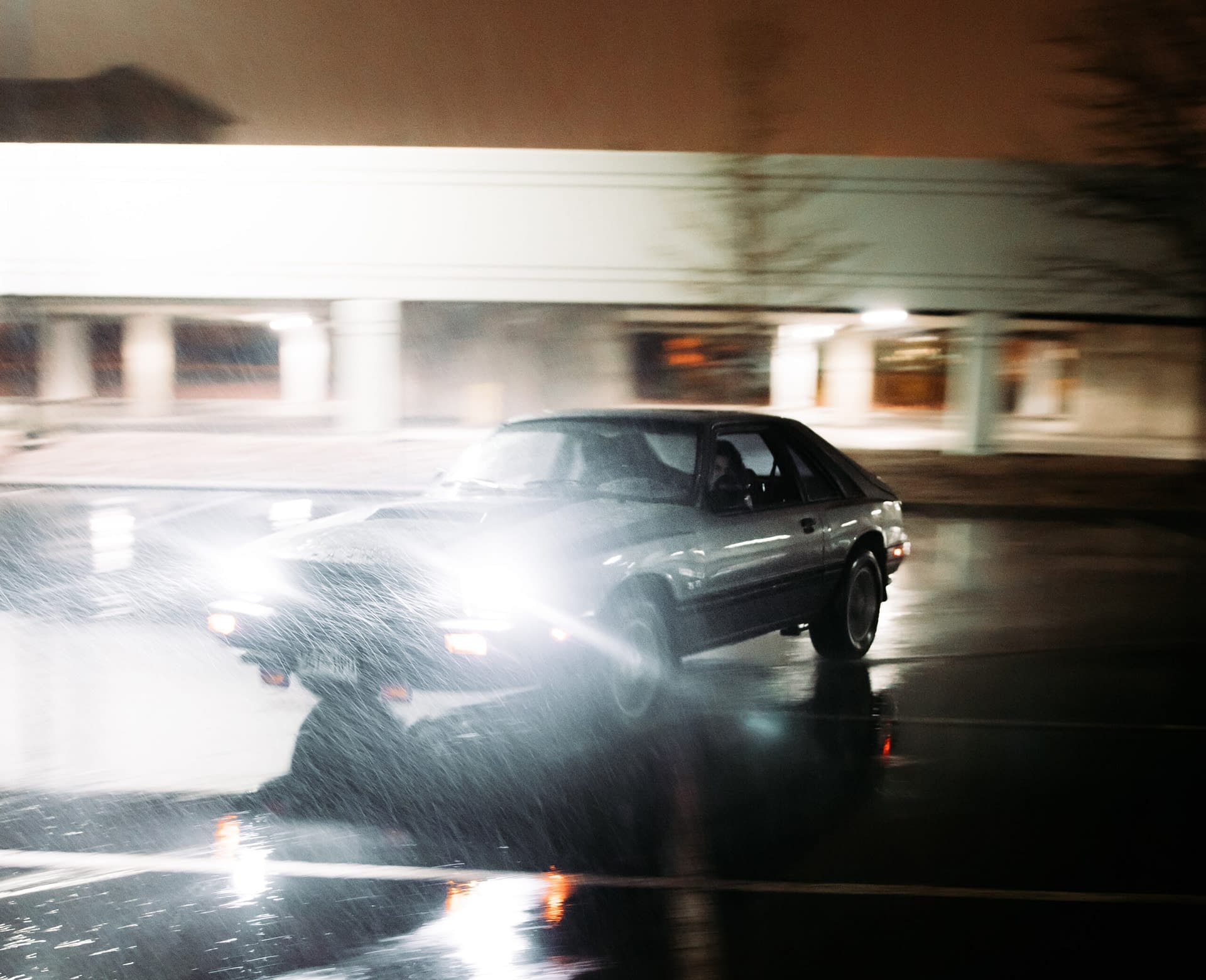Book Review Online
Time Is the Raw Material
On Lisa Hsiao Chen’s debut novel, Activities of Daily Living.
By Declan Fry

Activities of Daily Living
Lisa Hsiao Chen
Norton, $27
My first encounter with dementia in literature came reasonably early. I was in my twenties and remember, with a strange clarity, that Ian McEwan’s novel Saturday had just been published. I hated it. Mostly for its politics and narrator, a middle-class neurosurgeon named Henry Perowne. In one scene Perowne wanders through London. Protests against the Iraq war delay him. He feels inclined to adjudicate, to judge. Although his skepticism around aspects of the rallies were prescient — he notes the sublimated narcissism of a protestor’s sign that declares “Not In My Name” — the relative ease of his life felt a little too engineered.
What moved me then — and still, I think, remain the novel’s highlight — were the narrator’s reflections on caring for his mother. In the novel, Perowne’s mother has begun to suffer from dementia. He catalogs the details of her existence as if he had always done so; as if to neglect this ritual — to not attend to the ordinary elements of her existence — would only confirm her disappearance. Familiarity and attention become the twin poles that orient and place her solidly within his life. I remembered long nights when, as a child, I waited for the peculiar thrill of hearing, as if it were a recording, the click of heels on floorboard that meant that my mother had returned from work. This sound signaled the possibility of our empty house filling, slowly, with her human presence, and conveyed something specific, as well: not joy, exactly, but a sense of someone arriving, of someone the world might otherwise have forgotten.
McEwan’s novel returned me to these memories, showing me what it might mean to lose this most intimate person — a person who has preceded you — and watch them succumb to something that will strip them, irreversibly, of everything. Contending with this loss, Perowne and the reader ask themselves a simple question: Who is this person vanishing before our eyes? Literature about dementia illuminates the infirm with unusual clarity, even as characters begin to lose themselves.
Alice, the Taiwanese American woman at the center of Lisa Hsiao Chen’s debut novel, Activities of Daily Living, is in her late thirties. She has moved to California from New York City to care for a man known throughout the novel only as “the Father”: an archetypal moniker, the kind of name or symbol a person might grow into. Which makes sense; he is, in fact, not a blood relative, but her white stepfather, a retired carpenter, and Vietnam vet. The Father, we learn, has developed dementia. Assisted in caring for him by her sister, Amy, Alice is also working on “The Project,” an artwork that gleans inspiration from the performance pieces of the reclusive Taiwanese artist Tehching Hsieh, referred to throughout as “the Artist.” (A recurring theme of the novel is the idea that a person’s activity or role defines their identity.)
Detail slowly accumulates around the Father, notably aspects of Hsieh’s biography, which serve as a through line for the novel. In addition to Hsieh’s own life and career, we are given the biographies and backstories of various writers and thinkers: potted philosophical histories, anecdotes, comparisons, drawings-upon. These act like the backing of a mirror, allowing the reflection of the Father’s life — and of Alice’s — to appear. It’s a kind of aggrandizing gesture, but then, no life makes sense without someone to attend to its details. These do not simply accrue, someone must collect them, and the Father and the Artist are no exception. This need, an act of care, is also predicated on the gradual winnowing of the Father’s existence: as detail is subtracted from his life, it requires additions, the daily activity of others. In the process, Chen considers: What does a life consist of? How does it look, how does it feel, how does it move? And what, finally, does it become, when placed under duress, under constraint?
Time is the raw material the artist depends on. We spend time, away from friends and family, away from ourselves, writing another self. Chen, in a memorable conclusion to a chapter on the artist Linda Montano — and there are many memorable conclusions in the novel — quotes Montano as saying: “I am most authentic when I am performing. I am really one hundred percent there. I can’t say that about any other aspect of my life.” But toward the end of his career, Chen writes, the Artist, unable or unwilling to repeat himself, decides to stop creating for an audience and instead devotes himself to his own raw material, that is, his remaining time on Earth: “No audience meant no more performing,” she writes. “No trace evidence. No before and no after. Just time, emerging.”
For artists, it seems, time moves along two separate axes: an outside axis we might call “world time” — the axis in which the artist engages with her audience — and an internalized one, which we might call personal time. It’s more intimate, hushed; a conspiratorial progression. Elaborating this idea, Chen turns to Edward Hopper:
Hopper’s painting of a desolate morning street flashed in her mind. Leonard Michaels wrote that Hopper put the feeling of the hours in his paintings. Hopper understood, as Henri Bergson did, that time existed long before we put it in clocks. Two types of time: the time it takes for sugar to melt in water, indisputable, scientific; and the time Bergson called durée réelle — real duration — time as we actually feel and live it.
World time is intractable and demanding, the stuff of pop songs that marvel at how the world can keep spinning and the sun continue rising while our certainties shatter and an unbearably great sadness overcomes us. Personal time — the durée réelle — is more forgiving. It is a friend. We need it to create, to make sense of what we are doing, or have done, or will do. But time, regardless of its axis, is often fiendish. There is never enough. We worry that we will never create the work we meant to. Or, that once we do, having finally accumulated enough experience, enough time to commune with ourselves and the times we have lived through, along with the requisite formal daring or artistic know-how, we will have run out of it.
Life is a performance: an audience of intimates watches on, for whom we care and who care for us in turn. Does the Artist require a witness? Does Alice need more time to understand who her father was? Perhaps. But if life itself is conceived as a process of artmaking, then there is always a witness. We could say — as the Artist might, having retired from artmaking — that, in making art, we witness ourselves. And the truth is we are never a lone witness; we have no idea who is thinking of us, what acts of care and noticing take place around us. The Artist does not know, for example, of Alice’s fascination with him, the way he has come to occupy her own life and art, to the point where it seems perhaps that she has begun to feel that these are one and the same. Alice even comes to view the care provided to her father as if it were a kind of narrative, one that can make sense of their relationship. It occurs, as narrative often does, under limitations, constraints, requirements that function as part of the exigencies of medical practice — but also, in their way, like plot constraints:
In the first few months after my father died, I surprised myself by how much I missed the reports from his caregivers. It used to be there was a delay of a day between when the reports were filed and when my sister and I received them. But when I read them, the events they described made my father feel close; his life had shrunk but still he imprinted himself on the present.
So everything begins to speak to Alice’s experience with the Father, and to the process of creating her own art. The winnowing of the Artist comes to mirror the winnowing of the Father, because the Father’s illness precludes time. (Alice: “She didn’t think the future would become the past so soon, that time itself could foreclose.”) But this sharpens it, too. It makes the final questions, the necessities of stocktaking, clearer. Alice begins to circle those questions, of migration, of memory, of makeshift existence. Which is what all existence is, in the final analysis. We come to a world prepared for us in advance and we do not know what to do with it, but we do what we can to make some sense of it. And every day is a confrontation with how little we know how to do this. For the artist, working under self-imposed constraints — as for Alice’s father, whose life has been constrained externally — this confrontation is accentuated, made clearer by the fact of having to ask daily life to give up responses to questions it never can, and never will.
A confession (I promise there will only be one, today): I told myself, writing this, that I wouldn’t use the phrase “activities of daily living” more than once. But the truth is that it encapsulates the central idea of Chen’s novel all too well. A healthcare term, “activities of daily living” refers to the skills required to take care of oneself independently — bathing, for example, or grooming. Eating. Dressing. Sleeping. Chen imbues it with philosophical import, as though Kierkegaard had written Either/Or after it became a kind of corporate collocation, or someone were to discover philosophical resonance in the phrase “going forward.”
This search for implicit meaning parallels how, at one point, in a “letter of speculation,” Alice imagines what occurred during the thirteen years Hsieh went missing from public life. The artist’s anonymity, his cultural background, and his status as a migrant (undocumented, he is at risk of deportation) all become terms of engagement for her. There are many ways to connect to a stranger, much as a family member might look for ways to recall the life of the person suffering dementia back to them: pointing out familiarities, correspondences, elements that make up a life. Another way to connect is to communicate to a person how you view them, describe the impressions they left on you: “Mostly people left you alone,” Alice writes, in her speculative letter to the Artist. “Disappearance Piece: you could feel yourself vanishing further and further into a place where no one knew you or thought of you other than as a back and a pair of hands.”
Never meet your heroes, they say, and Hsieh is keen to ensure Alice doesn’t. Having made his life his art, once he leaves the New York scene, she is left with little more than this afterimage of his back and hands. Encountering the Artist, finding herself unable to talk to him, Alice reflects that she “wasn’t ready” for “her subject to slip his moorings and cease being, to some degree, a figment.” Never meet your heroes? In large part, you can’t. They don’t exist. They’re in your head. Alice’s father is proof: as she sees him through his final days, all she can do to make sense of him is piece together memories.
In a passage describing Linda Montano and Tehching Hsieh’s collaboration “Rope Piece,” in which each artist was tied to the other with a rope and lived together for a year, Chen writes:
To curious passersby you explain that what you are doing is an experiment. You’ve learned from experience that if you call it art the reaction is sometimes hostile. An experiment is more humble. An experiment suggests you wanted to learn something — about human nature, say, or our capacity for coexistence. Calling the project art confounds people (Why do you do such performances?), or, worse, comes off as self-indulgent, as though your behavior is mocking people’s efforts to live their lives without illusions.
It’s a pointed statement about the way we attribute utility — however manufactured or arbitrary — to activity, lending it a validity that art must forego. Why? Because art is indulgence. Because art is unnecessary. An experiment suggests you wanted to learn something. It’s in deprivation — like the voluntary sensory deprivations conducted by the Artist, or the involuntary ones of illness — that we get closer to what life looks like, freed from illusions and taken-for-granteds. Despite Montano’s fantasies of killing the Artist while they collaborate on the piece together, despite the scratches they each make in the bedpost, seething and explosive, which were witnessed by Marina Abramović when she eventually came to visit, the relationship between Montano and Hsieh culminated in Montano feeling bereft when their year of living together so intimately finally came to an end.
Bereft: the same word Alice uses when her father goes.
“[N]othing quite gleams like a future project,” Alice remarks, “forever the unspoiled crush-object seen from across the room.” When Alice spots the Artist in Chinatown, she reflects on how “[t]he sight of him stopped her cold. Outside of that one time she’d seen him at his restaurant café, she’d never seen the Artist anywhere else out in the world living the life of an ordinary man. Now here he was, materialized like a cameo in the stream of her day. Or was Alice the one with the walk-on part in his life?” There is some ironic tension here regarding Alice’s ability to narrate her own story, as opposed to simply functioning as a narrator or witness to the lives of others.
The most famous cameos we will experience — the real stay-up-till-midnight guest appearances — are relatively simple. They arrive unannounced. They appear when our loved ones come home. They exist in the sound of a pet rushing to meet us. A mother or father pushing open the door when we are young:
Dreams are the natural habitat of the cameo, which derives its power from the dissonance of its arrival. The other night in Alice’s dreams, the Father made a brief appearance. Nothing much happened. It wasn’t the sick father but a younger father, the one she’d known for most of her life. This father rose from a chair, strode across the room in his steel-toed Red Wing boots with the ordinary, thoughtless grace of a healthy man, the lie of which, when she awoke, made her weep.
They have lived for us; we, in turn, live for them.


